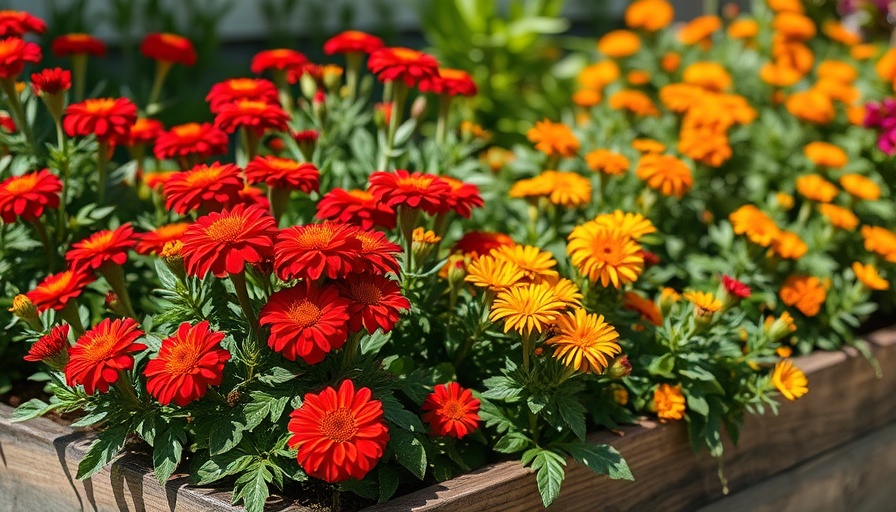
Discover the Power of Companion Planting with Flowers
Have you ever thought about using flowers as natural pest deterrents in your garden? Just like superheroes, some flowers possess remarkable capabilities that go beyond mere aesthetics. By incorporating the right varieties into your garden, you can effectively combat common pests while enhancing the beauty of your outdoor space. In this article, we’ll explore companion planting, showcasing five incredible flowers that not only deter pests but also promote a vibrant garden ecosystem.
Unlocking the Secrets of Companion Planting
Companion planting is a time-honored gardening technique that harnesses the strengths of various plants to create a mutually beneficial environment. This practice involves growing certain plants near others to enhance growth, reduce pests, and improve yields. Key benefits of companion planting include:
- Pest Control: Certain flowers deter harmful insects that threaten your vegetable crops.
- Pollination Aid: Many flowers attract pollinators like bees and butterflies, ensuring your garden thrives.
- Habitat Creation: Flowers can provide refuge for beneficial insects, fostering a balanced ecosystem.
- Visual Appeal: Adding flowers to your veggie patch enhances aesthetics while providing practical benefits.
The Top 5 Super Flowers for Companion Planting
Here are five flowers that pack a punch in the battle against garden pests:
Borage
Borage is an exceptional companion for tomatoes, effectively warding off pesky tomato hornworms. Not only does it serve as a beautiful addition to your garden with its star-shaped flowers, but it’s also edible! The flowers resemble a mild cucumber flavor, perfect for summer salads. Borage thrives in full sun and well-draining soil, making it a hardy choice.
Nasturtium
Nasturtiums are particularly interesting as they attract aphids, drawing them away from your prized veggies. This flower acts like an aphid magnet, ensuring your beans and peas remain untouched. Furthermore, nasturtiums deter whiteflies and squash bugs, adding to their gardening benefits. This versatile plant can be used creatively in dishes, bringing both color and taste.
Chrysanthemum
Chrysanthemums are not just breathtaking to look at; they contain pyrethrins, natural insecticides that repel a variety of pests, including ants and Japanese beetles. By integrating chrysanthemums into your garden, you gain a dual advantage by deterring pests and adding a splash of color, making your outdoor area both functional and beautiful.
Marigold
Marigolds are perhaps the best-known flower for pest prevention. Their strong scent confuses and repels aphids, nematodes, and even rabbits! Marigolds are easy to grow and can thrive in numerous garden designs, from raised beds to flower pots. Their vibrant hues brighten up any garden while performing a critical protective role.
Petunia
Petunias are particularly effective against thrips, aphids, and tomato hornworms. They’re widely loved for their charming colors and pleasant fragrances, which add a beautiful allure to any garden setting. Planting petunias near your vegetable crops can significantly reduce pest encounters, allowing you to enjoy a fruitful harvest.
Enhancing Your Backyard Garden Experience
Integrating these super flowers into your garden isn’t just about aesthetics; it’s a thoughtful approach to sustainable, organic gardening. Not only will these flowers deter pests, but they also attract essential pollinators, contributing positively to the overall gardening ecosystem.
Taking Action in Your Garden
As you consider expanding your flower garden or designing new layouts for your vegetable plots, remember the power of companion planting. By taking advantage of these many benefits and strategically placing flowers in your yard, you can cultivate a healthy, thriving environment in your backyard!
In closing, I encourage you to explore these remarkable flowers and their gardening benefits. Start experimenting with companion planting in your own vegetable patch! You’ll not only see a reduction in garden pests but also enjoy a more beautiful and fulfilling gardening experience.
 Add Row
Add Row  Add
Add 




Write A Comment